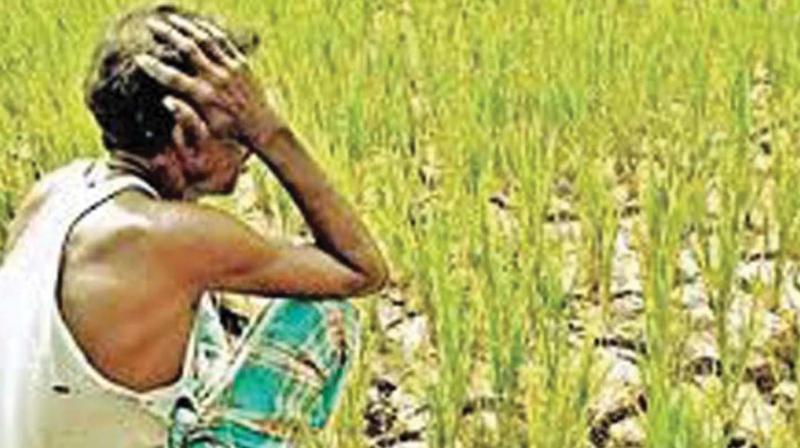Khammam: Dry spell forcing farmers to quit
June month disappointed the farmers with only 49.9 mm rainfall against the regular 105 mm average rainfall.

Khammam: There is an urgent need to look for changes in farming patterns in view of the recurring drought and dry spell conditions in Khammam and Bhadradri-Kothagudem districts.
Each dry spell has forced at least a few farmers to leave agriculture and migrate to the cities in search of other work. This year, effort is being made to change the mindsets of farmers in the two districts.
The farmers of the two districts have four negative environment scenarios to deal with—rising temperature, fluctuating rainfall patterns, less rainfall adversely affecting the productivity of the crops and continuous dry spell conditions.
Rising temperature is one of the most important determinants of the crop growth. The time schedule of kharif and rabi are being changed as per the year’s rainfall conditions.
The districts have named this kharif as ‘second summer’ with temperatures fluctuating between 35 and 40 degrees. As a result, the farmers raised crops only in 56,997 hectares instead of 2.30 lakh hectares in Khammam district.
Cotton was raised in 41,000 hectares against 96,000 hectares while cotton plants have dried in 18,000 hectares. So far, there has hardly been any sustained medium or long range policy or strategy in the state. As a result, the farmers have suffered a lot as they are finding it difficult to understand the changing environment patterns.
N. Sitaramaiah, a farmer of Raghunathapalem said, “The government should go for new crop pattern science keeping the environment problems in view.”
There is no answer to why the South-West monsoon failed and why Khammam and Bhadradri district did not have at least one spell of good rainfall in the district.
June month disappointed the farmers with only 49.9 mm rainfall against the regular 105 mm average rainfall. The farmers faced the same experience in July too. So far, the rainfall recorded has only been 36.5 mm.
Farm experts were asked to revisit the time schedule of kharif and rabi keeping the environmental issues in view. “Contingency plans are being implemented by farm department but they are nether comprehensive nor extensive; research is required to find out a solution”, opined N. Sankar, a student of agricultural B.Sc in Aswaraopet Agriculture College.
The analysis of rainfall records for long periods provides information about cropping system, rainfall patterns and variability and crops that can be grown.
The unpredictability of rainfall over the years has made hundreds of farmers leave agriculture and shift to urban areas searching for other professions. K. Gopaiah, who left farming and opened a small business in Khammam said, “The dry spell occurred three years back forcing me to leave farming.”

